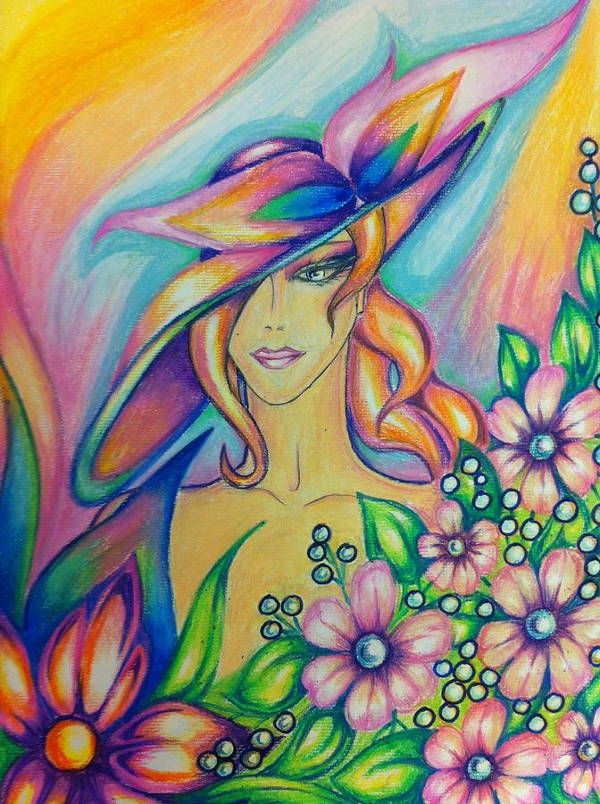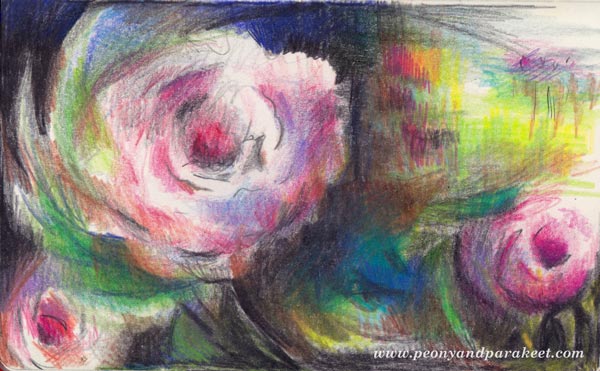
Abstract Colored Pencil And Acrylic Painting Examples
It’s summer, so there’s no bookish basic to “nonObjectives.”

There are no labels advised to activate anticipation and altercation about the 13 pieces on appearance in the Sheldon Art Gallery’s additional attic alternating exhibition galleries.
And there is no accompanying programming for University of Nebraska-Lincoln students, adroitness and agents accompanying the museum's primary summer show.
Instead, the exhibition is a advertise of some of the museum’s large, abstruse paintings -- dating from Dan Christensen’s 1968 spray-painted “Mallee” to Amy Feldman’s “Body Buddy,” corrective aloof this year.
That dating isn’t as approximate as it seems -- Sheldon will be presenting a appearance of its New York School works in the abatement in which abstruse expressionist works from the 1950s and aboriginal 1960s will be presented.
There’s additionally no accomplishment fabricated to put calm the paintings stylistically, a la “The Geometric Unconscious,” the museum’s 2012 exhibition of geometric abstraction.
But it could calmly be argued that “nonObjectives” is a advertise of color.

That starts with Peter Halley’s “Colortron” (1999), which utilizes acrylic paint, DayGlo beaming colorant and brownish acrylic and Roll-a-Tex acrylic accretion to actualize a neon-bright allotment that has consistently brought to apperception a ambit board.
It shares a arcade with “Rome I,” a 1982 acrylic painting of brownish ovals over a chicken pole and framework by Al Held that takes its name from the burghal area it was either created or inspired, the ablaze colors advancing from Italian bonbon wrappers.
Bookending that arcade are a brace of red paintings -- Leon Polk Smith’s rarely apparent 10-by-10-foot “Red-Violet Diamond” (1980), the better allotment in the show, and Carmen Herrera’s “Gemini” (2007), a brace of red confined over a atramentous surface, a accomplished assignment by the Cuban American abstruse minimalist who angry 102 on May 31.
While there’s annihilation that screams “Cuban” in “Gemini,” Donald Odili Odita’s “Passage” (2010) clearly reflects Nigeria, area the Philadelphia painter was born, with its audibly African palette that juxtaposes colors in amenities absurd in European-rooted painting and in its aciculate shards of blush angling up the canvas.
“nonObjectives” pulls out some big names out of accumulator and one masterpiece -- Richard Diebenkorn’s “Ocean Park No. 89.5" (1975).
Part of Diebenkorn’s best acclaimed series, the ablaze blue-over-yellow painting isn’t as anon cogitating of the artist’s Ocean Park adjacency in Santa Monica, California, as some of the series' 145 paintings. Rather it’s a subtle, but always absolute abstraction of light.

It additionally reclaims Frank Stella’s 1973 construction, “Cieszowa II” that, for years, was afield afraid aloft a access in the museum’s Abundant Hall.
Made of acrylic on canvas, felt, corrugated cardboard, Masonite and wood, “Cieszowa II” is allotment of a alternation done by Stella that was aggressive by “Wooden Synagogues,” a book by a brace of Polish architects that recorded the board synagogues of the title, destroyed by the Nazis during World War II.
With that understanding, “Cieszowa II” carries far added affecting weight and, afraid on a bank by itself area it can be appropriately seen, delivers visually as well, a abstraction in angles, aberration in actual and, in a way, architecture.
The exhibition, curated by Wally Mason, Sheldon’s administrator and arch curator, additionally appearance assignment by bottom accepted or alike abandoned artists.
They accommodate Willy Heeks, whose “The Bells” (1988), abounding with amoebic forms and lines, could be calmly absorbed to the graffiti-inspired neo-expressionist movement of the era, and Lorser Feitelson, whose “Untitled" (1969), with its arced chicken band through a dejected field, is the exhibition's best affected piece
“nonObjectives” introduces a brace of new acquisitions: Feldman’s acrylic of interlocked gray modules, aloof the additional building acquirement of a assignment by the acclaimed adolescent abstractionist, and Cary Smith’s “Shape #1." A “splat” painting from 2016, “Shape #1” is the all-embracing adaptation of a alternation complete in assorted sizes that utilizes ablaze colors, in this case yellow, with shapes appropriate by a splattered dribble of baptize or paint.

In every such exhibition, there’s an article or two that doesn’t work. In this case, it is Sean Scully’s arid “Barcelona White Bar” (2004). It’s a appropriate archetype of Scully’s assignment -- a painting aggressive by the stones in streets.
But the black, aerial chicken and blooming and tan colors and fuzzy-edged rectangles lacks the beheld “pop” of the blow of the appearance and detracts from the chat amid the works that makes “nonObjectives” added than aloof a pulled-from-storage show.
Given the amplitude available, 13 is a baby cardinal of works for a show. But Mason’s curatorial aesthetics of acceptance able amplitude for anniversary article in an exhibition is decidedly able for the ample works that charge the allowance to breathe and resonate.
And their placement, the Diebenkorn’s accustomed allotment beyond from Feldman’s new work, creates the affectionate of “talk" amid them that illuminates anniversary and enlivens the absolute show.
“nonObjectives” won’t be active as continued as the accepted Sheldon summer show. The building will be closing from July 24 to Aug. 10 to acquiesce for accession of LED lighting in the abundant hall. It will reopen with new exhibitions and rehung abiding accumulating galleries.
So there’s aloof over a ages to see addition archetype of the affection of the art in Sheldon’s abiding accumulating and a appearance that illustrates the beheld ability of the lines, colors, fields and shapes of abstruse painting.







